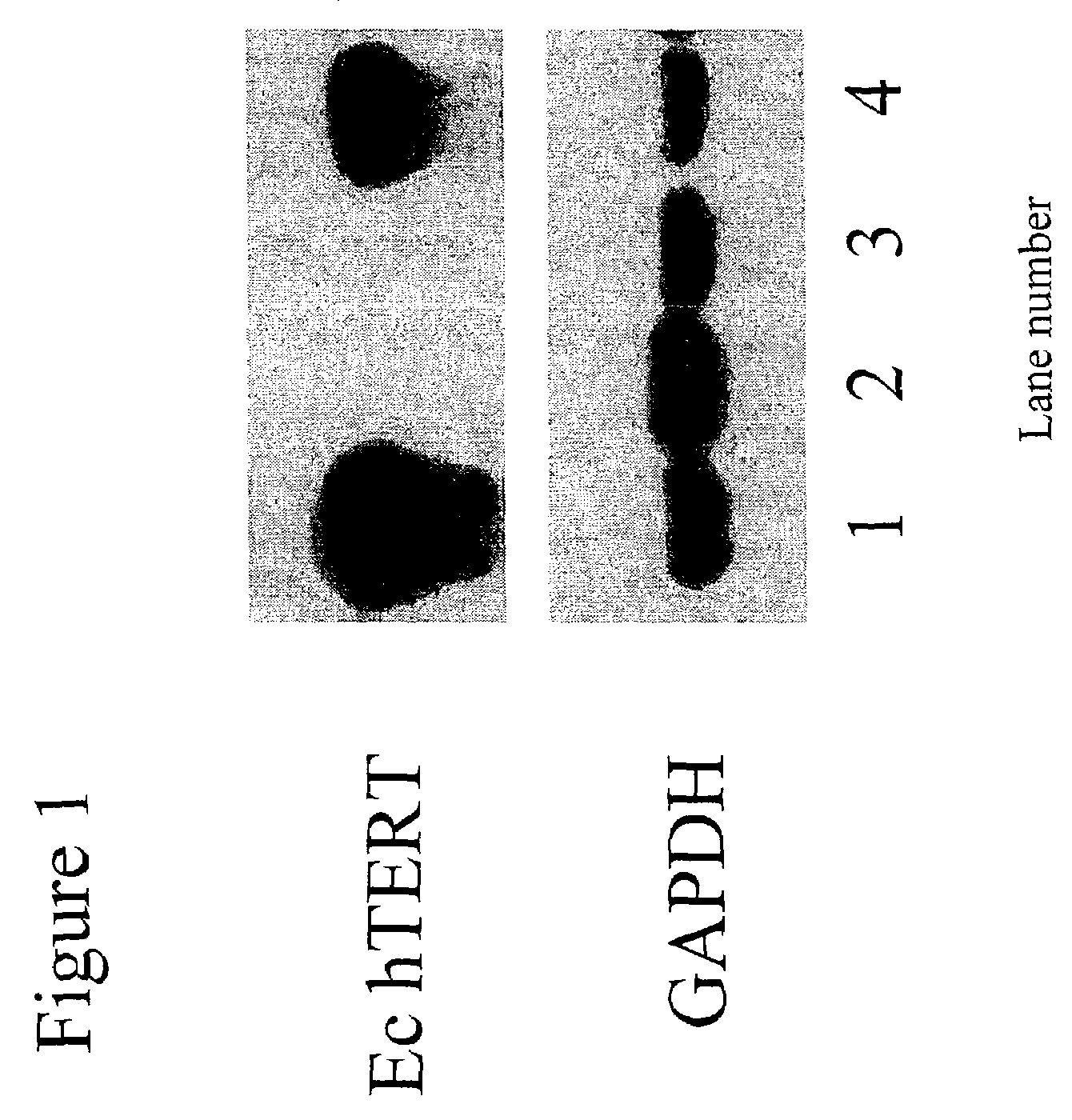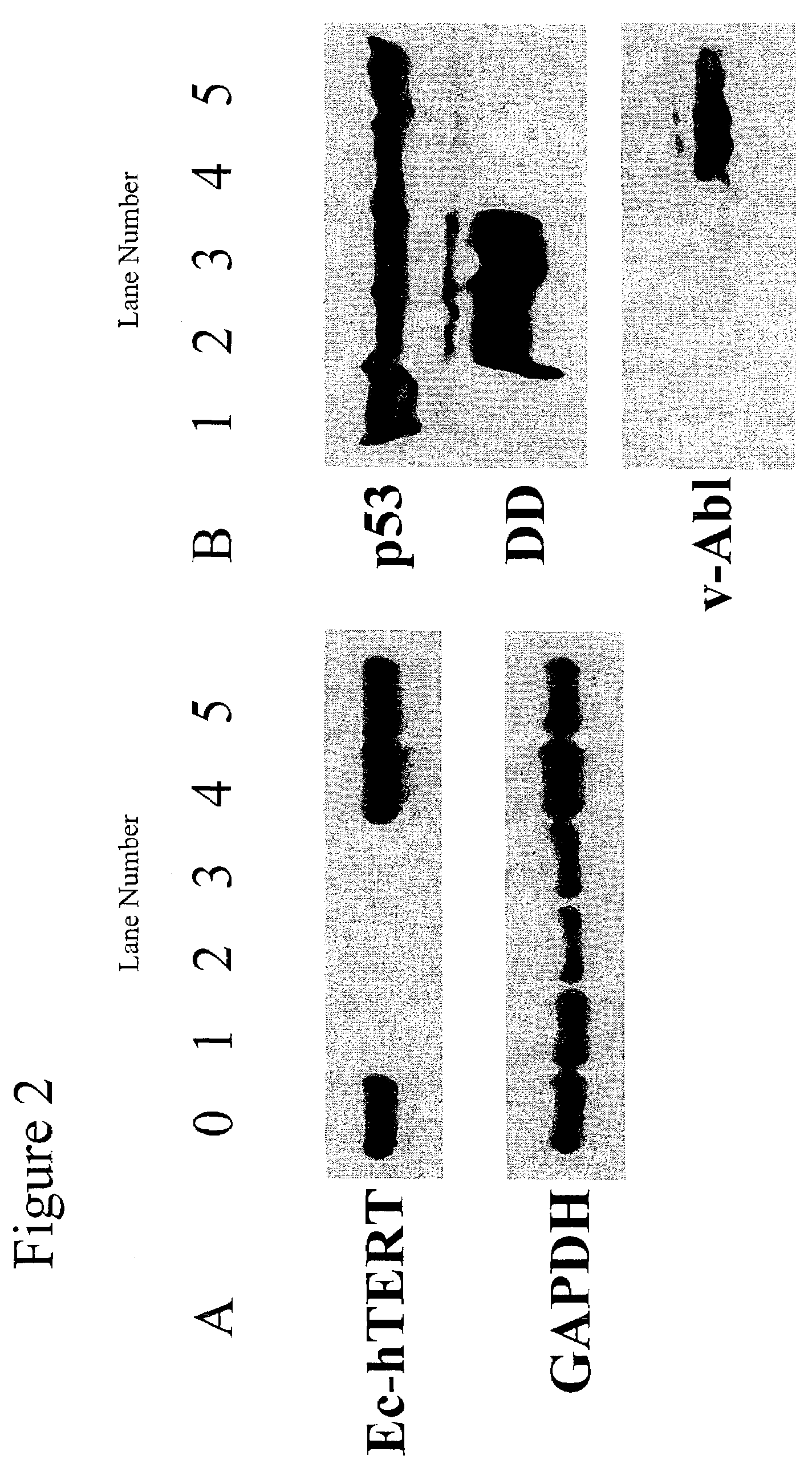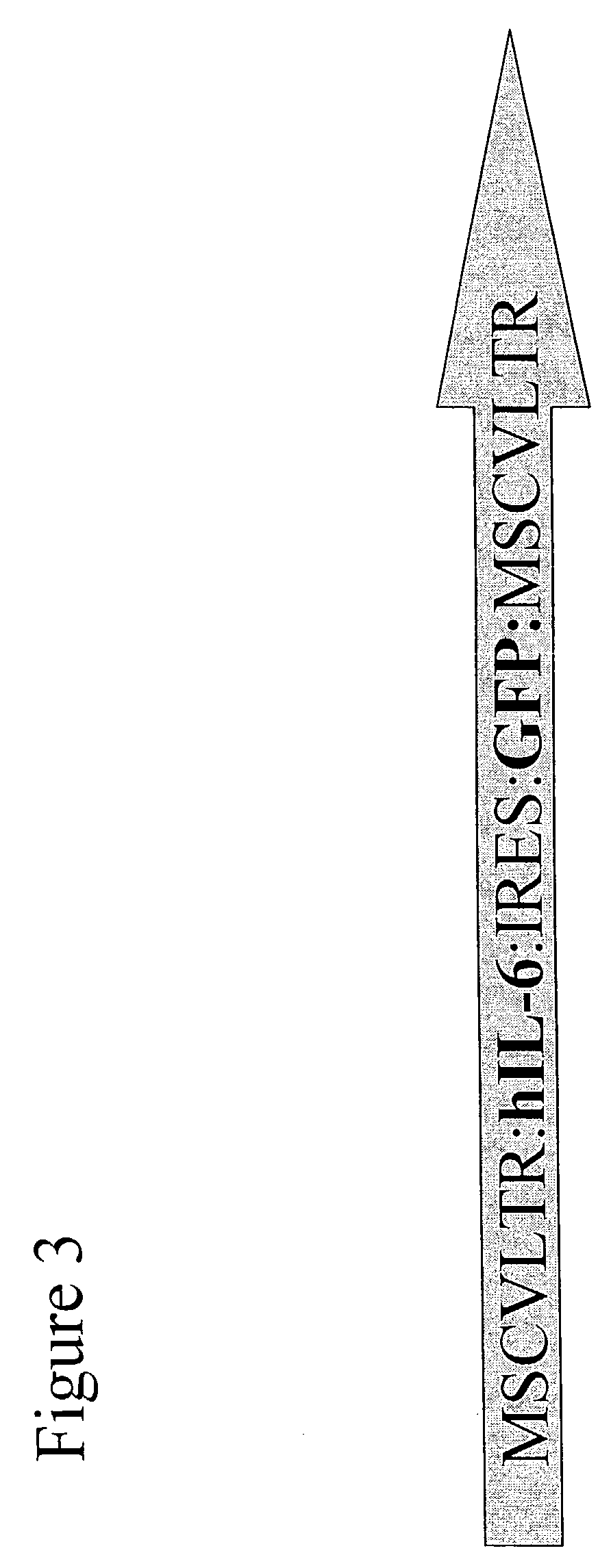Fusion partner cells and uses thereof
a technology of partner cells and fusion partners, applied in the field of fusion partner cells, can solve the problems of limited human use value of murine antibodies, serum sickness, and enormous potential utility of enormous potential utility, and achieve the effects of improving the growth rate, stability of ig expression, and level of ig expression
- Summary
- Abstract
- Description
- Claims
- Application Information
AI Technical Summary
Benefits of technology
Problems solved by technology
Method used
Image
Examples
example 1
Expression of Ectopic Genes in Murine and Human Myeloma Cell Lines
[0260]Genes were ectopically expressed in human and murine myeloma cell lines utilizing standard techniques of retroviral gene transduction, as previously described. An ectopic hTERT gene or retroviral vector sequences were introduced into the SP2 / 0 mIL-6 murine myeloma cell line, creating the cell lines SP2 / 0 mIL-6 MP-hTERT and SP2 / 0 MP. RT-PCR was performed (as described above) to assess the presence of ectopic expression of human telomerase in the cell line SP2 / 0 mIL-6. FIG. 1 shows ectopic hTERT expression in the band in the upper panel and GAPDH expression is shown in the lower panel, assayed as a positive control for the presence of intact RNA.
[0261]An ectopic human IL-6 gene was introduced into the murine myeloma cell line, SP2 / 0 MP-hTERT, creating the polyclonal cell line SP2 / 0 MP-hTERT-hIL-6. Expression of the protein was verified by ELISA assay. These cells were also cloned, creating the clonal cell lines SP...
example 2
IL-6 Stimulates Cloning and Antibody Production in Murine / Human Hybrid Cells
[0265]The ability to clone hybrid cells by limiting dilution is important for the creation of monoclonal cell lines and the monoclonal antibodies they produce. The fusion partner cell line SP2 / 0 mIL-6 MP-hTERT was fused to primary splenocytes and cultured in HAT-selection medium using standard techniques. The hybrid cell populations were cloned by limiting dilution into 96-well plates. Following cell fusion, wells containing hybrid cells formed with either the SP2 / 0, SP2 / 0 MP-hTERT, and SP2 / 0 mIL-6 MP-hTERT cells and human B-cells were plated at a density of 1, 5, and 10 cells per well. The number of clones arising following limiting dilution was counted. Each of the clones was tested for expression of human immunoglobulin protein. The total number of clones growing and the number of clones expressing immunoglobulin protein are depicted in FIG. 4. The SP2 / 0 mIL-6 MP-hTERT cell line is compared to the parenta...
example 3
mIL-6 Increases the Percent of Hybrid Cell Populations that Yielded Clones Secreting High Amounts of Immunoglobulin
[0266]In a repeat of the experiment described in Example 2, hybrid cell populations created between human splenocytes and SP2 / 0 fusion partner cell lines with and without ectopic mIL-6 expression were cloned by limiting dilution as described above. Growing clones were tested for immunoglobulin expression. Some of the clones expressed a high level of immunoglobulin, as indicated by a very deep color on ELISA assay that arose within seconds of adding the detection reagent. The proportion of hybrid cell populations that gave rise to clones expressing a high level of immunoglobulin is depicted in FIG. 5. The mIL-6-expressing populations gave rise to significantly more high-expressing clones than did populations formed without mIL-6. This indicates that mIL-6 increases the level of immunoglobulin secreted and the maintenance of that phenotype by hybrid cells formed between m...
PUM
| Property | Measurement | Unit |
|---|---|---|
| total volume | aaaaa | aaaaa |
| concentration | aaaaa | aaaaa |
| stability | aaaaa | aaaaa |
Abstract
Description
Claims
Application Information
 Login to View More
Login to View More - R&D
- Intellectual Property
- Life Sciences
- Materials
- Tech Scout
- Unparalleled Data Quality
- Higher Quality Content
- 60% Fewer Hallucinations
Browse by: Latest US Patents, China's latest patents, Technical Efficacy Thesaurus, Application Domain, Technology Topic, Popular Technical Reports.
© 2025 PatSnap. All rights reserved.Legal|Privacy policy|Modern Slavery Act Transparency Statement|Sitemap|About US| Contact US: help@patsnap.com



